-
Posts
2,650 -
Joined
-
Last visited
-
Days Won
45
Content Type
Profiles
Forums
Blogs
Gallery
Events
Store
Posts posted by Graf
-
-
-
2 hours ago, Bratovanov.T said:
Here is my current collection of bravery crosess from the Balkan wars.
I know that I have two degrees of second class i just don't want to spend more money on a soldier's crosses.
Will make updates when I collect the officers cross and the 1,2,4 envelopes!!!!
Nice small collection
You do not need to get more Good decision to go now to the Officers Classes I suppose from the "seven points" Emission
Fourth Class of the Officer Cross from this emission has only Second Grade are is more affordable
as the highest Classes The First grade of the Fourth Class was introduced for the First time in the '1915' emission The next emissions of the Fourth Class all of them have First and Second Grade
The fourth Class from the "seven points' emission has two main variations with fat lion and with a slim lion in the central medallion
Also there are some other rare variations of the Fourth Class
-- with the lily
- with the elongated ear this variation is considered to be the very first issue of the Fourth Grade Cross/Badge
- without swords for Doctors and Clergy man
I discovered that it was made in France
-
0 -
BTW If you have not found yet - to make the pictures bigger you have to click with the right button of your browser on the desired picture
Cheers
0 -
19 hours ago, Bratovanov.T said:
Thank you so much, you made things so clear!
Welcome
Good luck in your collecting
My advice is to start with the standard Crosses and once you get experience you can start looking for more rare ones.
Remember - The soldiers crosses (and also the Officers ones) without swords are made without swords. If someone offers you a cross with cut off swords it is not an original one The swords have been cut off for profit, since those crosses demand higher prices Also one of their feature is that they are smaller and slimmer than the standard crosses with swords
Cheers
0 -
-
All those crosses are from the the first emission with the "seven points" Awarded during the Balkan Wars
The second emission is with the "1915' Those crosses were awarded during WW1 In the beginning of the WW2 left overs from the "1915" emissions were awarded
In the late stages of WW2 the "1941" emission crosses were awarded mainly to German military persons Those crosses had Austrian/German style triangular ribbons They are made by the German Company Zimmerman Their quality is much better This is the only emission that have a bronze Cross
The vast majority of soldiers crosses were made in Bulgaria There are samples of the first two emissions made by Austrian and German companies Their quality is very good this.Some of them made from 800 0r 925 Silver
There are single samples of "1945' emission made in Bulgaria however they were never approved and awarded Their quality is bad
The crosses had different ribbons
The standard ones followed the design for the Classes from 1 to 4
First Class - Gilded Cross with crossed ribbon
Second Class - Gilded Cross with straight ribbon
Third Class Silvered Cross with Crossed ribbon
Fourth Class Silvered Cross with straight ribbon
There were also crosses with pentagonal ribbon seen in all emission I believe this was the choice of the awarded person
There were also crosses awarded to medical Staff without swords
1 -
On 25/04/2024 at 02:20, JohanH said:
Very nice
On 16/02/2024 at 21:31, larsb001 said:Another nice group, attributed to Carl Frithiof Dahl (27 July 1869 - 22 August 1952).
On the group we have The Order of the North Star (Gold 18ct), the Order of Vasa (Gold 18ct, crown gilded), the Royal Swedish Sailing Society Commemorative Medal 1830-1930 (silver), the Swedish Sailing Society Merit Medal in Gold (Gold 23ct) and the Stockholm Yacht Club excellent service Medal (Silver gilt). So a group with some rarely seen miniatures.
It's allways good to be able to find info on a group, the following text is not mine, but taken from Wikipedia;
Carl Frithiof Dahl was a Swedish engineer and builder. The family moved to Stockholm in 1871 and he graduated in 1890 from Byggnadsyrkesskolan Bysan at the Technical School in Stockholm. He was approved in 1897 by the city's building committee as a master builder with permission to erect buildings in the capital. He received his bachelor's degree in 1904 and in 1905 entered the office of Master Mason, where he became Master Mason number 202.
Dahl then practiced for a time in an architect's office before establishing himself as a master builder in Stockholm. In 1912–1913 he collaborated with architect Folke Zettervall where he drew up and signed the floor plans for the property Hornblåsaren 6 (Strandvägen 63).
The first major task was the Värtagasverket. Among the buildings erected by Dahl, Stockholm City Hall , the Royal Dramatic Theater and the Byströmska villa (Prince Carl's Palace on Djurgården) are notable above all, as well as PUB's department store at Hötorget and PUB's department store at Hornsgatan.
In 1906 he became a member of the Masonry Office and in 1917 he was elected to the board of the office and became its treasurer. In 1908 he became a Knight of the Order of Vasa and in 1923 a Knight of the Order of the North Star.
In the years 1908 to 1909, Dahl built his own city villa Sånglärkan 9 at Baldersgatan 3 in Lärkstaden. He hired architect Folke Zettervall, who designed a powerful brick facade. Dahl was a well known profile in the sailing world and a member of KSSS and one of the founders of Stockholms Yachtklubb. His interest in sailing and the sea is reflected in the facade decorations on the town villa at Baldersgatan 3. The gate is flanked by two sculptures showing a sailboat in a stormy sea and a light house among high waves. On the balcony railing rest two dolphins carved in stone and originally there was a wind vane in the shape of a sailing ship on the gable tip. He was also a cross-country skier, active in equestrian sports and one of the pioneers in cycling.
Dahl married Olga Pedersen in 1899. The couple had three children, Ragnar (born 1903), Folke (born 1908) and Yngve (born 1914). His wife died at Sophiahemmet in 1945 and he himself died in 1952 and was buried on August 29 of the same year in the Northern Crematorium at the Northern Cemetery .
Excellent
On 17/01/2024 at 03:55, Jstrom said:Very nice
0 -
22 minutes ago, gjw said:
Nice Good Luck in your new adventure
Yes Lubo has the knowledge to guide you through the mine field of the Bulgarian Communist Decorations
Cheers
0 -
On 11/04/2024 at 16:08, Igor Ostapenko said:
Yes I agree Fake Star Somebody paid $1400 plus commission
Cheers
0 -
3 hours ago, Bratovanov.T said:
What is the best book about Bulgarian orders for the 1878-1944 9 September period? I'm thinking of buying Veselin Denkov's book because it's very cheap (it's 25 euros/ 50 levas)
It is a very nice book i have in mind 2011 Edition Weak point is the evaluation of the decorations The current market demands much higher prices.
I do not recommend you to buy the older 2001 Edition It is smaller book and the information is not as good Most of the pictures are black and white. For starting point is OK, however the 2011 Edition is much better
Late Prof Pavlov books are the best however they still demand much higher price then Denkov book(s)
Cheers
0 -
4 hours ago, ilieff said:
Most likely, yes. As long as the cross appears 'golden' (that is, either of yellow metal or gilded) and, of course, hasn't been altered by greedy 'traders' later on, it would be the top two classes.
No, that is incorrect. Until [at least] the end of the war, there were 3 classes of the soldiers' cross. However, we can be fairly certain that there were no wartime decorations, per se. In December 1885, once the war had ended, a fourth class is added. And no, the folding of the ribbon had little significance and cannot be used to date crosses - we can see pentagonal ribbons from the Balkan wars, as well. The folding of the ribbon was just a preference of the bearer, ribbon manufacturer specifics (to an extent) and partially a heritage from the Russian influence in the Bulgarian military.
Yes, it's possible.
We do not have sufficient information to speculate about the country of origin.
If you are interested in the historical aspects of the topic, I would encourage you to search for Todor Petrov's book "Наградната система на България (1878 - 2010 г.)". It's a very good source of information, giving a clearer historical context, especially for those initial stages of the award system.
Very nice explanations
Those crosses could be 1st and 2nd class
Once the ribbons from 1 to 4th Class were introduced then the class could be identified easier
1nd and 3rd Class had crossed ribbons
Here is an overview of the Order for Bravery You can see that the pentagonal ribbon was used till the end of WW2
Yes Todor Petrov book is a good reference
0 -
-
3 hours ago, steveBobby said:
I may have a different opinion on this, I don't think it's made from Scheid, Because the last letter of the Order of Alexander produced by the manufacturer Scheid takes on the typical shape of the number "8". But the last letter shown in this topic does not have such characteristics. But in terms of manufacturing time, I think it may have come from the First World War, but it was not made by Scheid but from other manufacturers, possibly Bulgaria’s own manufacturers.
Yours
Setve
Hi Steve It is made by Austrian maker. As you noticed it might be not Shield
The cross is typical Austrian made During Prince/King Ferdinand all Royal Bulgarian Orders were made mainly in Austria and smaller numbers in France There are single numbers made by Swiss or Hungarian makers King Ferdinand was not keen any Orders to be made by Bulgarian Makers He was crazy about quality.
Cheers
0 -
13 hours ago, Kriegsmarine Admiral said:
It's the version without Swords. It was awarded in 1938 or early 1939.
Yes you are correct No Swords I do not know why i saw swords
The time looks correct as well
Cheers
1 -
10 hours ago, Igor Ostapenko said:
Austrian production, Scheid , 1910-1919 yy.
Yes it is nice 5th Class Cross Austrian made in the beginning of last century Prince//King Ferdinand period
War time awarded with swords in the middle
Usually they are silver made -marked or unmarked If it is made by Shield the mark will be on the ribbon ring
Price 150-180 Euro
Cheers
0 -
On 17/03/2024 at 09:27, Farkas said:
Hi Gents,
I thought this was worth a mention.
2 weeks ago I followed some link or other and it took me to the ‘MyHeritage’ site.
The information was behind the pay wall.
I decided to sign up for the 14 day free trial after which, unless cancelled, I would be charged £79 up front for a years access…
I didn’t fancy paying that and today,on day 13 I cancelled my free trial.
I then got a further discount offered.., which I accepted.
- Price reduced to £32.70 , for first year.
- About 60p a week, to me, is worth paying…So Gents, I just wanted to share this.
If like me 33 quid is a price you can accept, try doing the above.
If you are going to sign up with them anyway then try this to see if you can get this same offer.
If you are already signed up and paying full whack ££ then say you want a discount or you’re off & start a new account.(if you don’t have stuff stored)
You get the gist anyway…
Lastly, I’m happy to have a look on there for established Gents that need something they can ‘see’ is there but is behind the pay well.
cheers
tony 🍻
Good Work Tony
1 -
On 02/04/2024 at 02:08, Kriegsmarine Admiral said:
I have a few photos that would fit this thread. I have my own thread about Kriegsmarine admirals, but I can post the relevant photos here also.
Konteradmiral Paul Wever, sitting 3rd from the left. This photo is very interesting because Wever is wearing all of his awards and decorations (including many foreign). See the close-up below for more information about these awards and decorations.
Wever was promoted to Konteradmiral on 01 September 1941 and to Vizeadmiral on 01 October 1943. He died from a heart attack (presumably caused by a sunstroke) on 11 August 1944 in Aix en Provence, South France. His posts during WW2 include:
-Chief of Staff of the Naval-Group-Command West (23 August 1939-04 December 1939)
-Chief of the Department for Naval Intelligence Analysis, OKM (01 January 1940-21 June 1940)
-Director of the Sub-Group Navy in the Armistice-Commission France (22 June 1940-15 January 1943)
-Placed at the Disposal of the Commander-in-Chief of the Naval-Group West (16 January 1943-01 September 1943)
-Commanding Admiral of the French South Coast (02 September 1943-11 August 1944)1: Commander's Cross of the Royal Order of the Crown of Italy
2: Commander's Cross of the Royal Bulgarian Order of Saint Alexander (approved on 31 March 1939 but awarded sometime earlier)
3: Spanish Cross in Silver without Swords (awarded on 6 June 1939)
4: Spanish Order of Naval Merit 2nd Class with White Decoration (awarded on 23 January 1932 and approved on 28 March 1934)
5: Ottoman War Medal (Gallipoli Star)
6: Clasp (1939) to the Iron Cross 1st Class (awarded on 5 December 1939)
7: Iron Cross (1914) 1st Class
8: U-boat War Badge 1918 (awarded on 3 March 1919)Very nice photo
On 07/04/2024 at 06:02, Kriegsmarine Admiral said:Very nice photo
On 02/04/2024 at 02:08, Kriegsmarine Admiral said:I have a few photos that would fit this thread. I have my own thread about Kriegsmarine admirals, but I can post the relevant photos here also.
Konteradmiral Paul Wever, sitting 3rd from the left. This photo is very interesting because Wever is wearing all of his awards and decorations (including many foreign). See the close-up below for more information about these awards and decorations.
Wever was promoted to Konteradmiral on 01 September 1941 and to Vizeadmiral on 01 October 1943. He died from a heart attack (presumably caused by a sunstroke) on 11 August 1944 in Aix en Provence, South France. His posts during WW2 include:
-Chief of Staff of the Naval-Group-Command West (23 August 1939-04 December 1939)
-Chief of the Department for Naval Intelligence Analysis, OKM (01 January 1940-21 June 1940)
-Director of the Sub-Group Navy in the Armistice-Commission France (22 June 1940-15 January 1943)
-Placed at the Disposal of the Commander-in-Chief of the Naval-Group West (16 January 1943-01 September 1943)
-Commanding Admiral of the French South Coast (02 September 1943-11 August 1944)1: Commander's Cross of the Royal Order of the Crown of Italy
2: Commander's Cross of the Royal Bulgarian Order of Saint Alexander (approved on 31 March 1939 but awarded sometime earlier)
3: Spanish Cross in Silver without Swords (awarded on 6 June 1939)
4: Spanish Order of Naval Merit 2nd Class with White Decoration (awarded on 23 January 1932 and approved on 28 March 1934)
5: Ottoman War Medal (Gallipoli Star)
6: Clasp (1939) to the Iron Cross 1st Class (awarded on 5 December 1939)
7: Iron Cross (1914) 1st Class
8: U-boat War Badge 1918 (awarded on 3 March 1919)The Commander of the Order of St Alexander is with swords in the middle -given at a war time
1 -
On 29/03/2024 at 00:27, new world said:
Civil Merit cross is a copy, R stands for Replica
Thank you
I forgot to clarify the "R' mark
0 -
On 29/03/2024 at 00:19, new world said:
It's possible the man in the photo wears medal awarded to his deceased wife. I saw examples of people wearing awards of close relatives who passed away.
Welcome back
Yes ,This was my first thought
0 -
-
On 17/03/2024 at 19:52, rpgr1 said:
Hello
I was wondering if someone can help with this order. It looks like the medallion with the kings' profile has been replaced with one with the flags. But the flag's colors are in the wrong order. The medallion looks original with no enamel repairs. Could there be an explanation for this, error in the manufacturing doesn't sound right.
Thank you
0 -
On 23/03/2024 at 10:01, Graf said:
Hi Welcome to the Club,
Very likely the front medallion was lost and who ever repaired the Orders attached what he had in hand
Those medallions get detached/lost quite often, since they are hold in place only by a stiky wax
On close inspection, in my opinion the blue and the white colours central medallion were re-enameled and they made a mistake The white enamel of the cross also was repaired
0 -
-



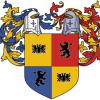

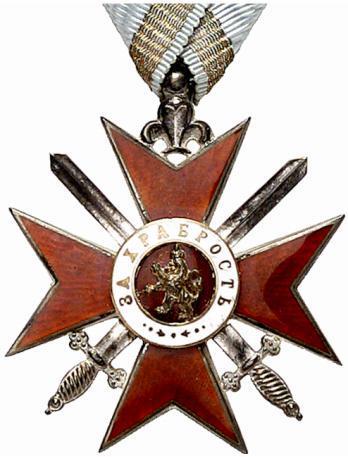
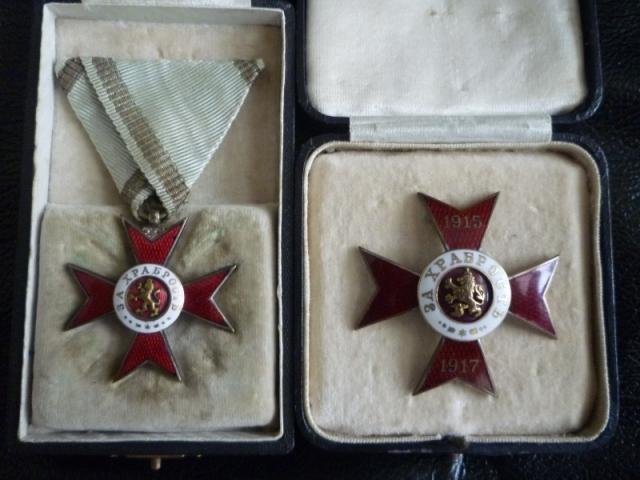
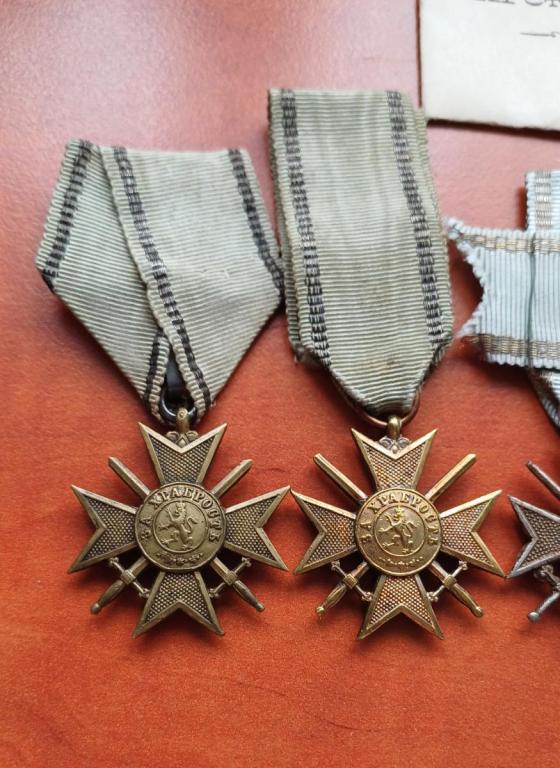
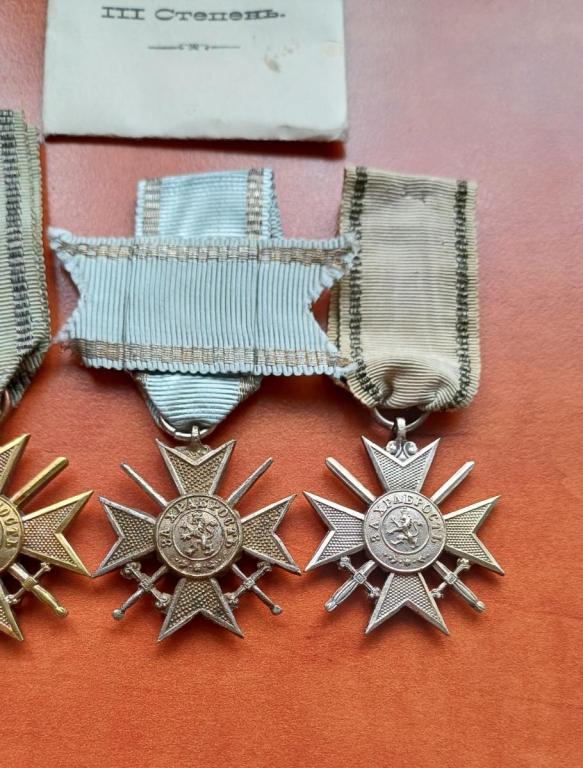

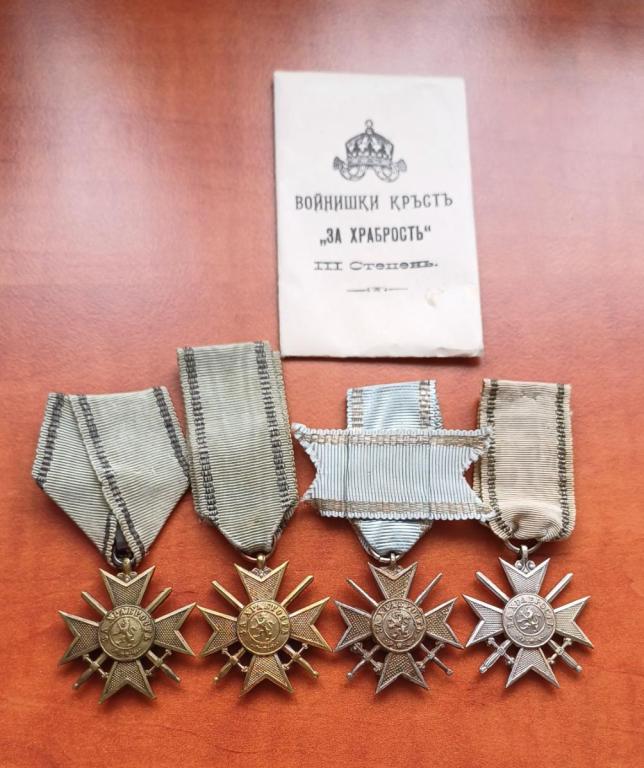
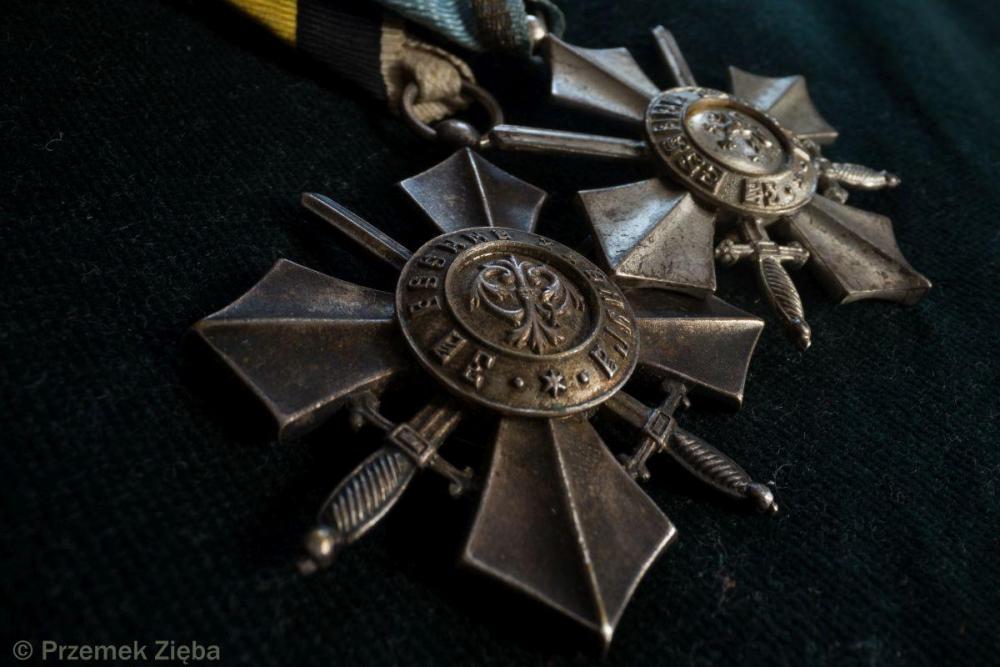
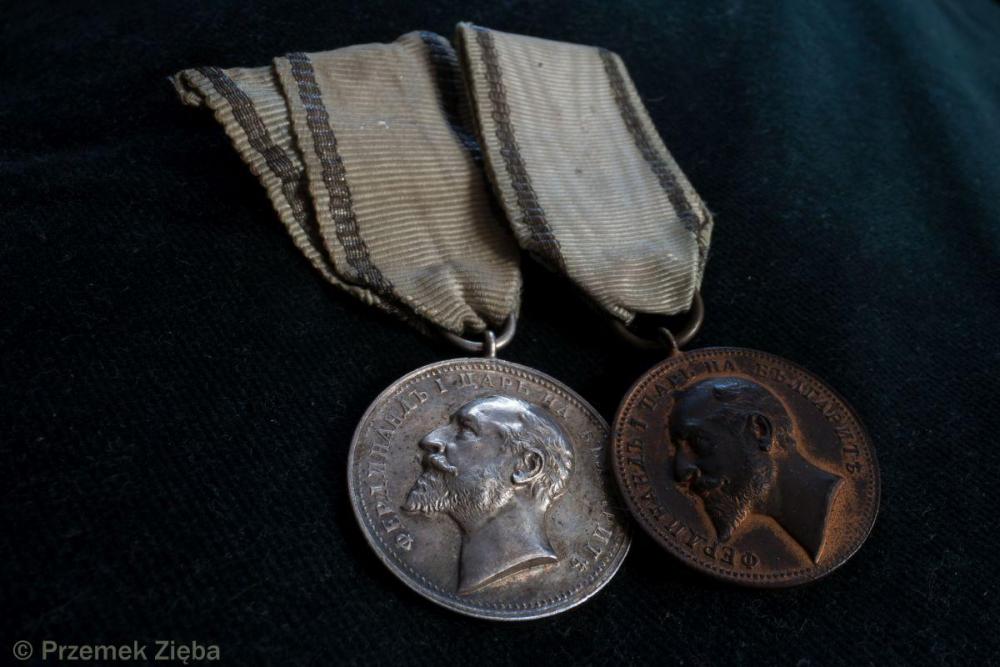
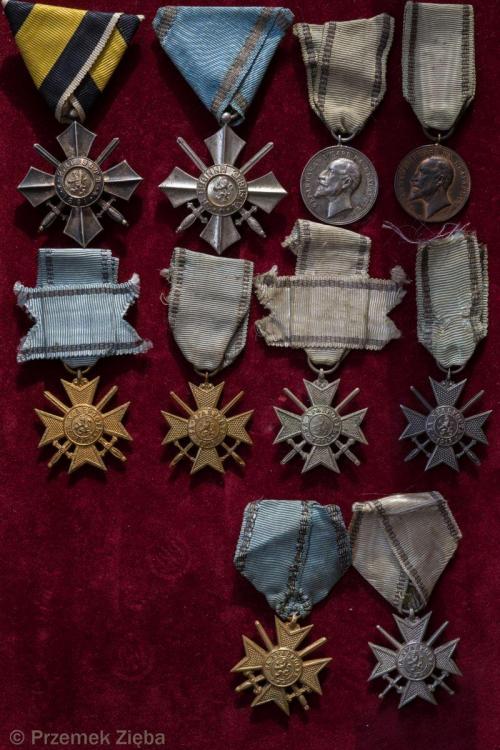
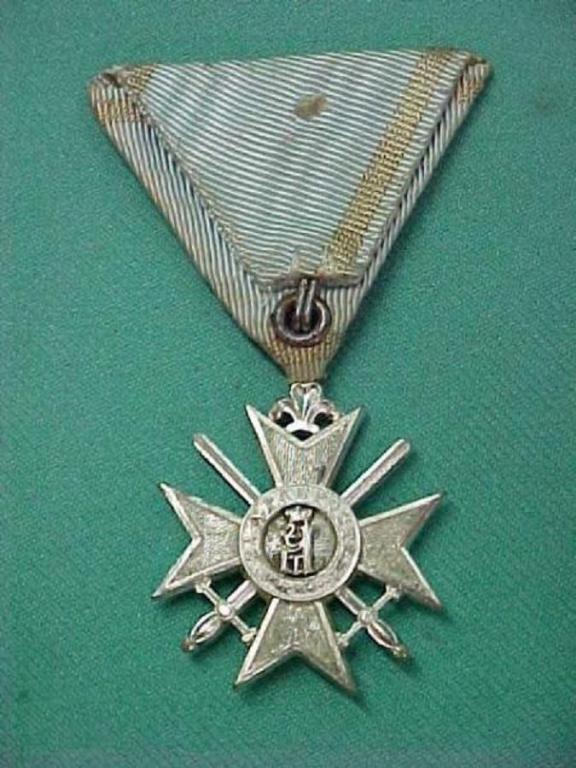
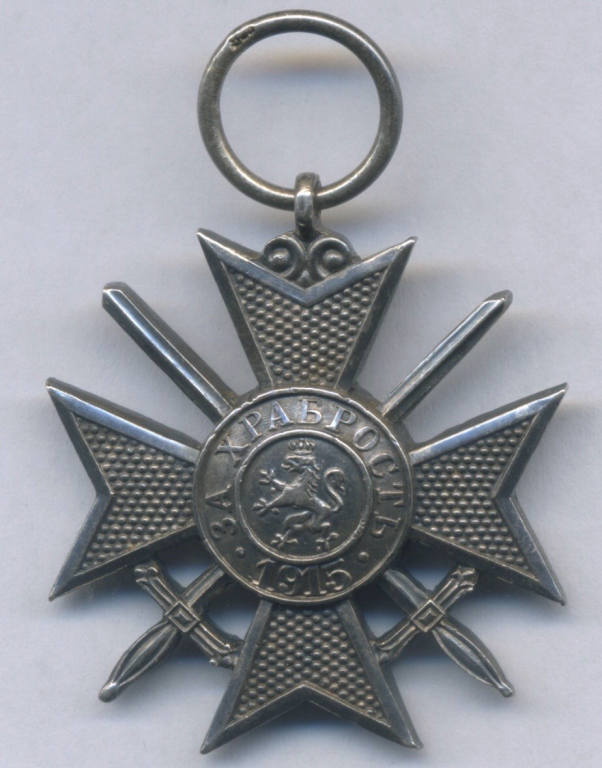


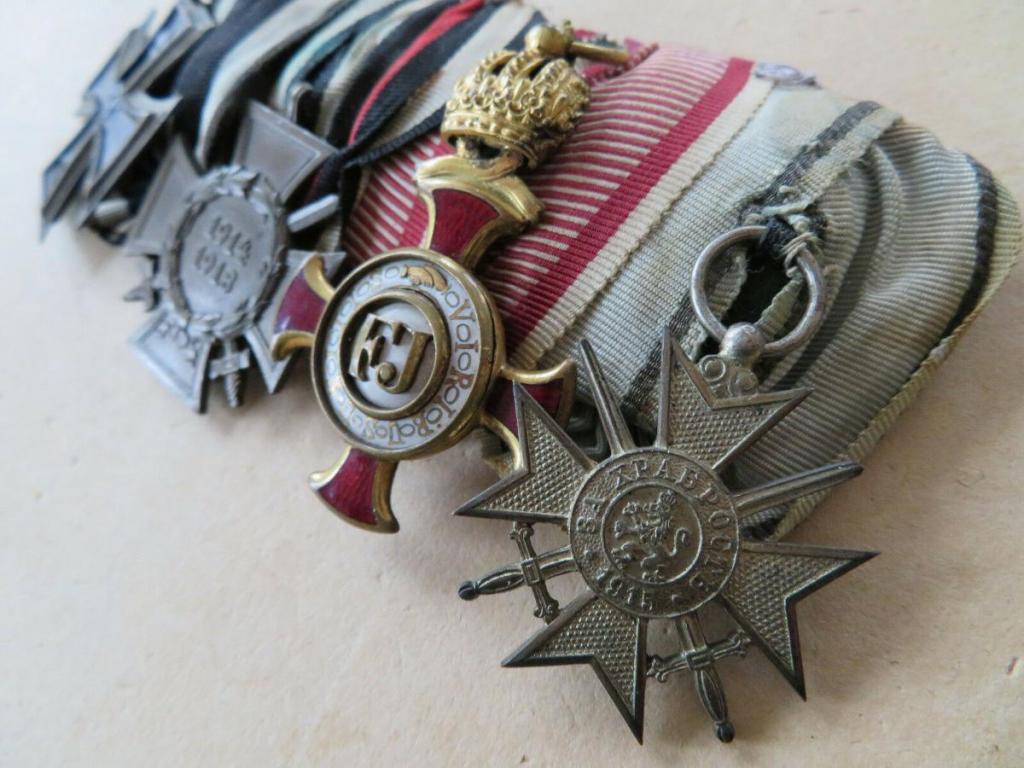
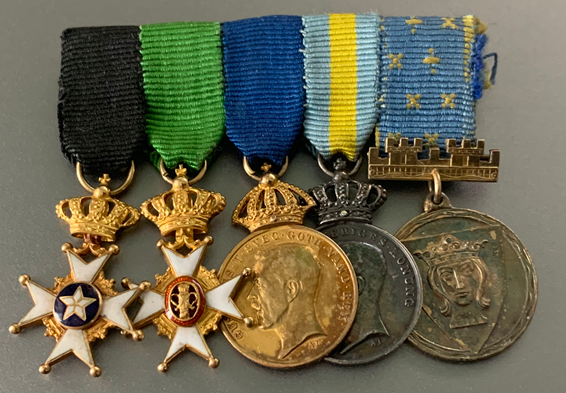
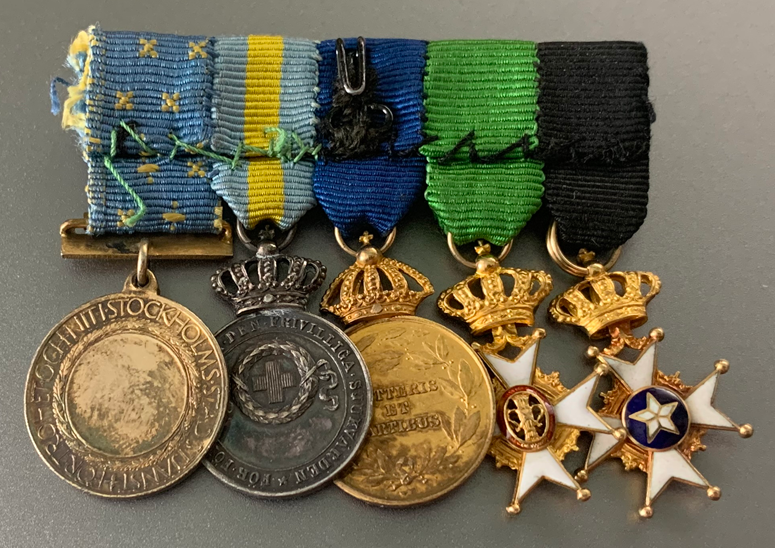
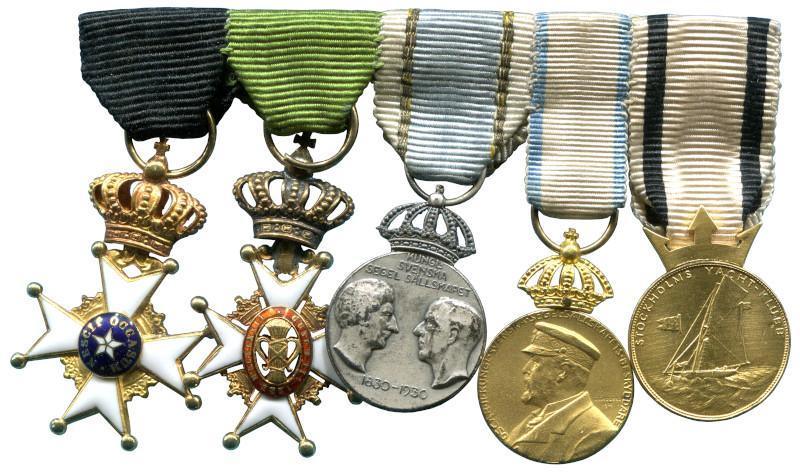


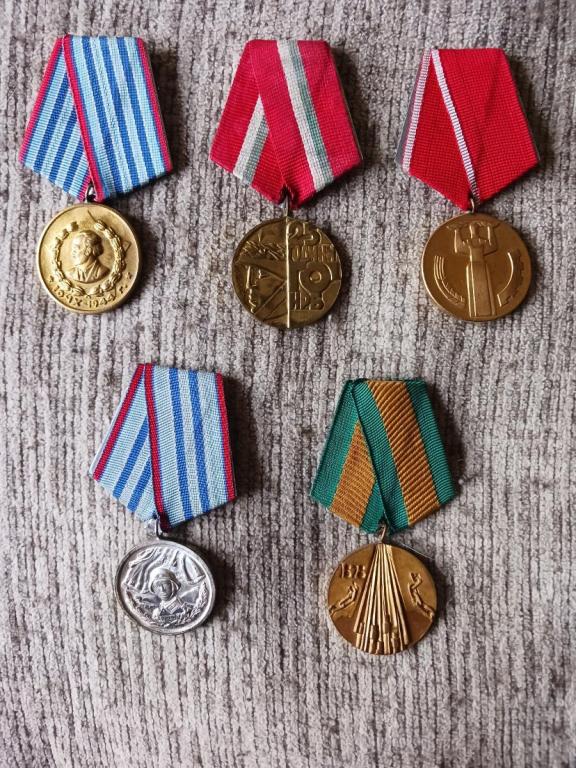

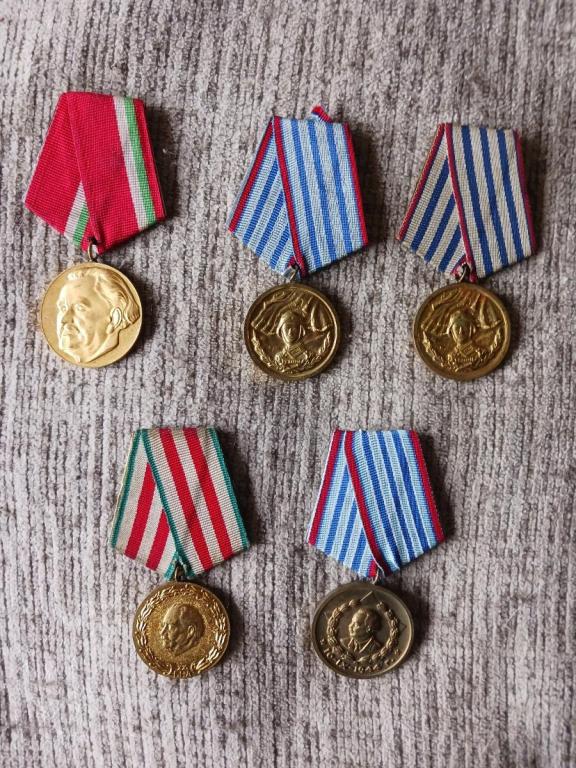
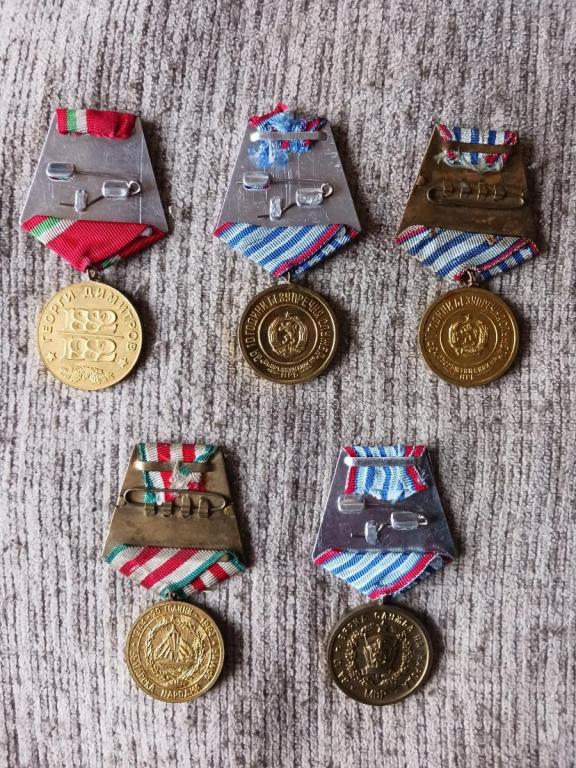

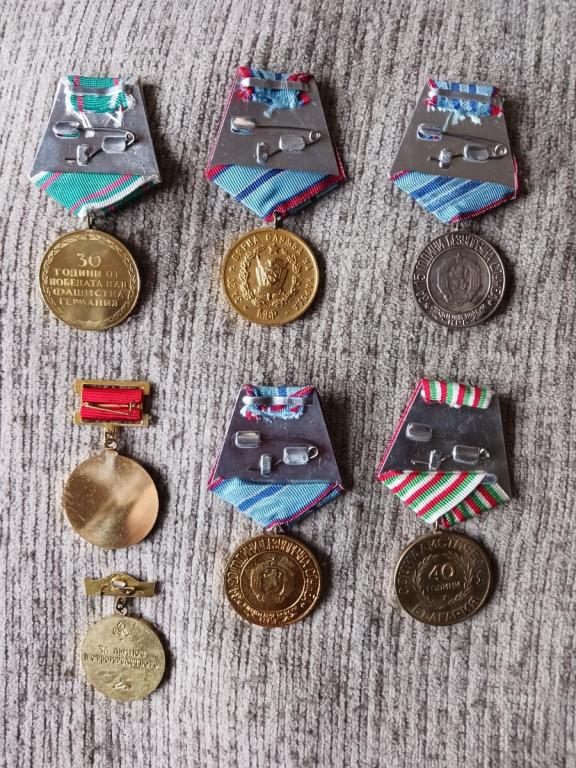
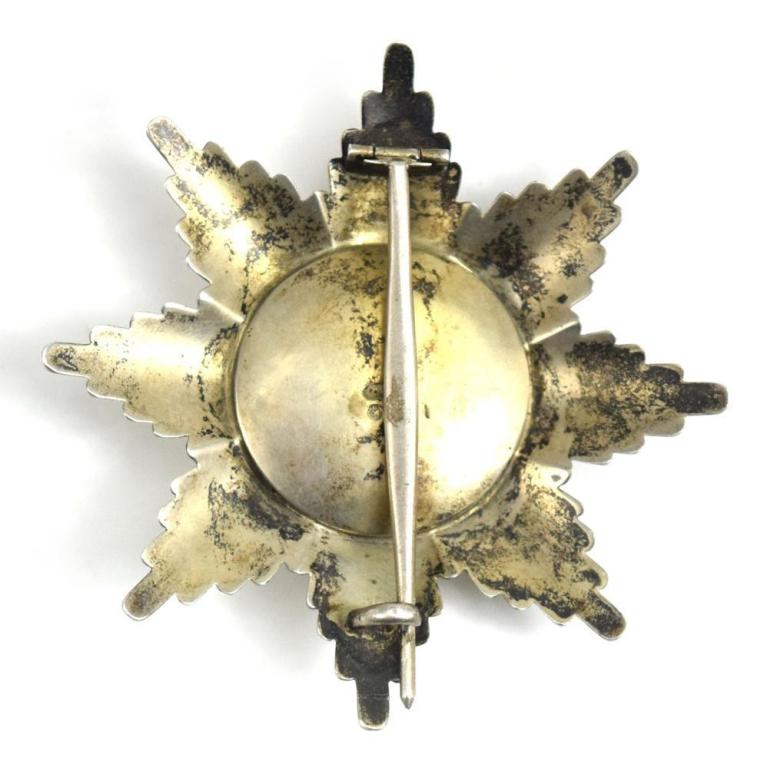
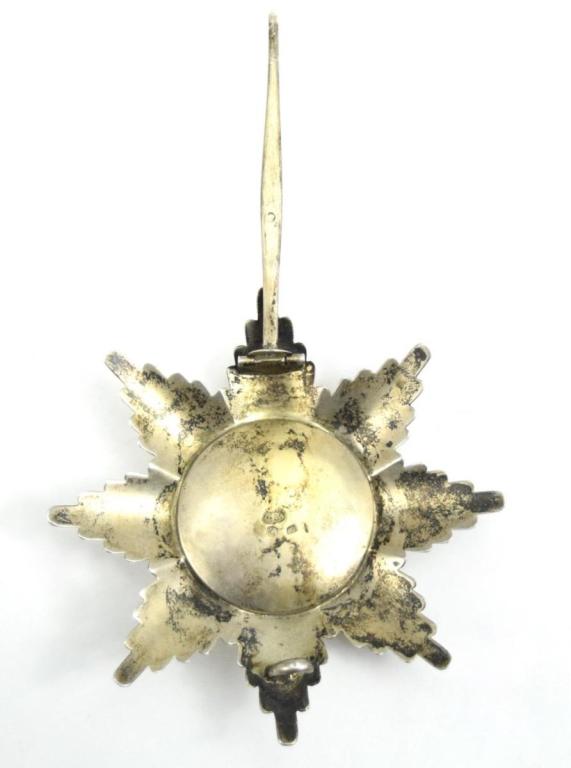

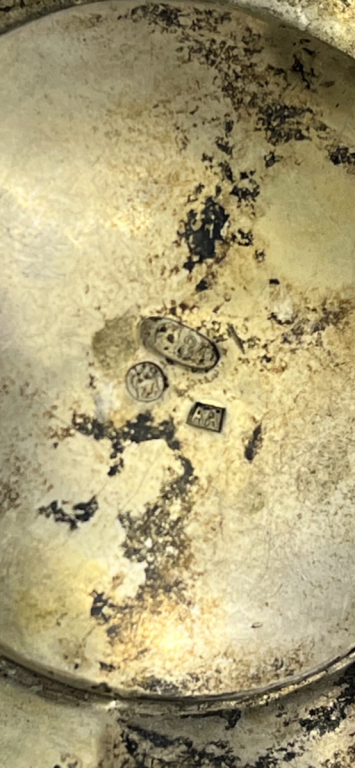

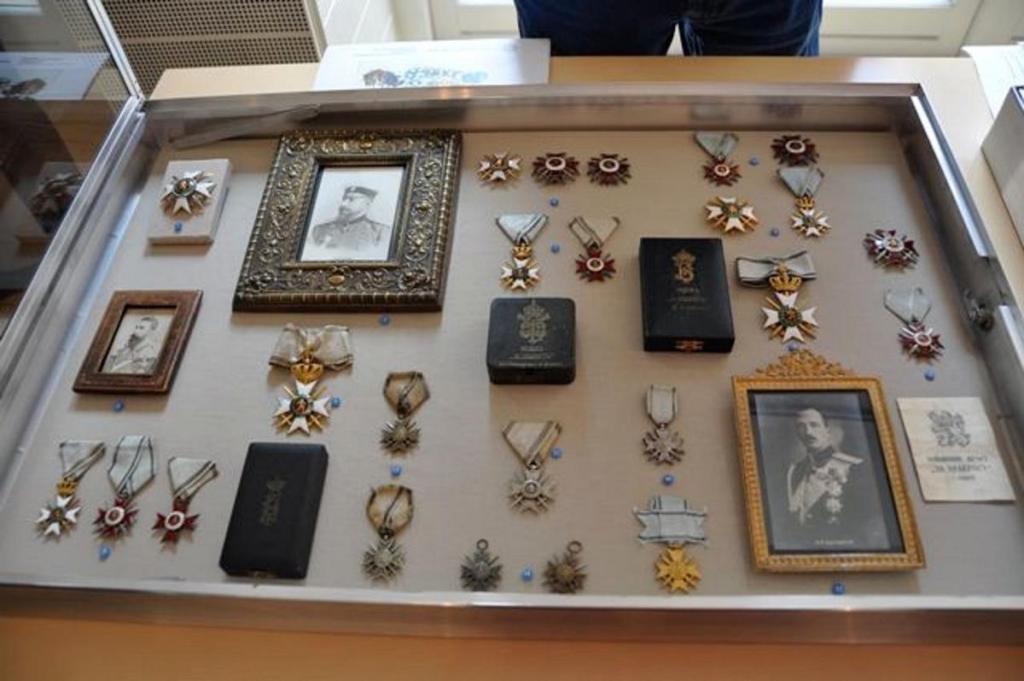


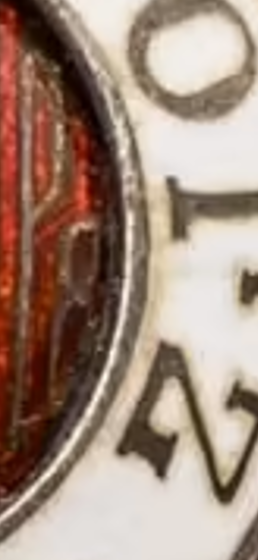


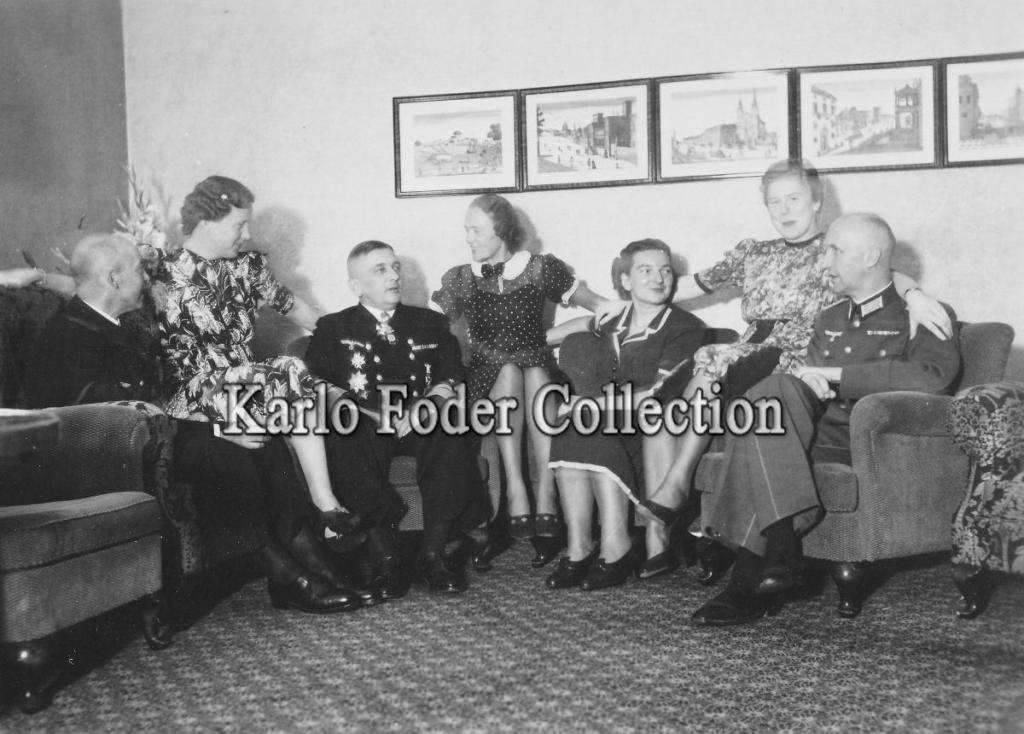


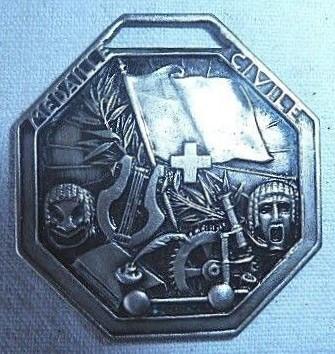
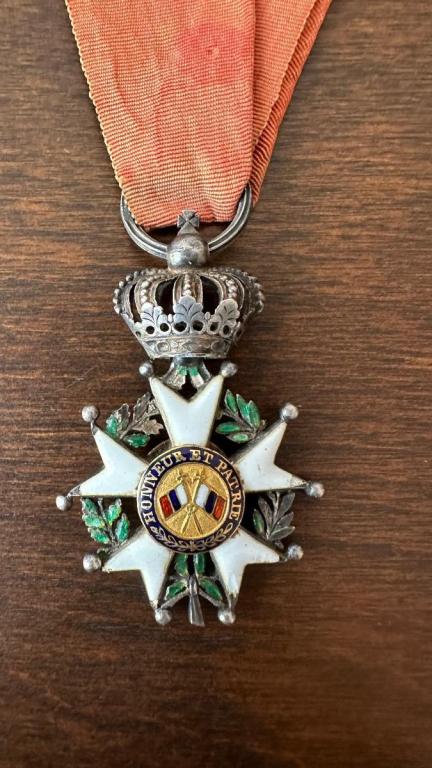
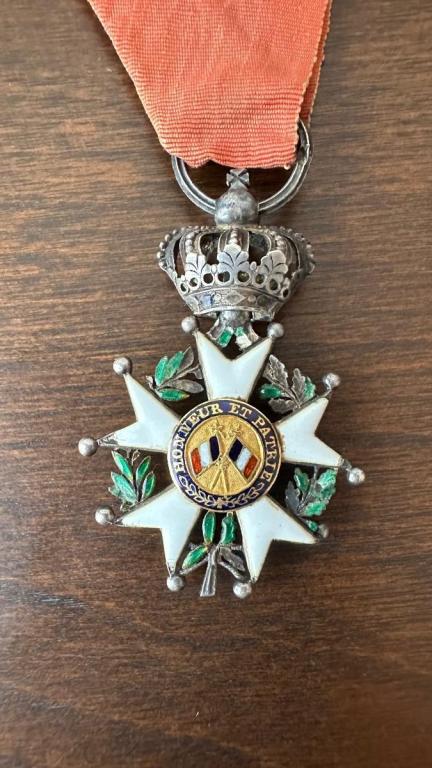

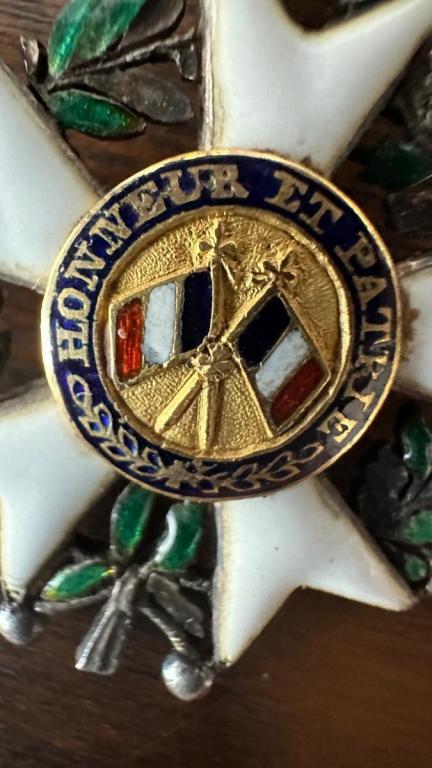
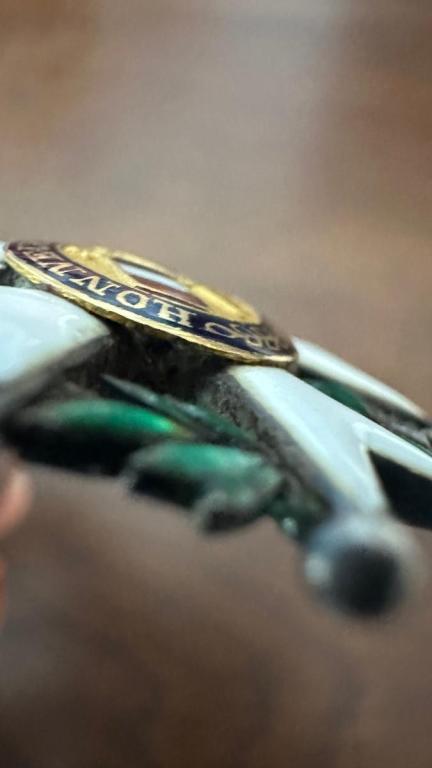
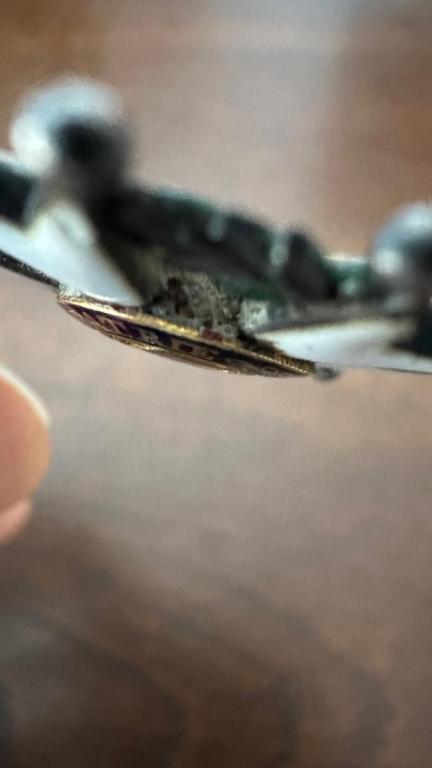
Difference between different bulgarian soldiers crosess emission 1880-1913, Bulgaria
in Central & Eastern European States
Posted
The cost will be around 250 Euro Without swords 450-500 Euro Price of a box for Second Class must be no more then 100 Euro
The boxes are rarer then the Orders because many have been damaged or lost Very unlikely to be thrown away in the trenches Do not forget they were awarded to Officers Also do not forget that during the Communist Period many of those awards were banned and many people had to hide them and it will be much easier without box.
I looked at the Bulgarian site Balkan Auction The prices of the Awards and boxes are quite high The problem is that the interest in Bulgarian Awards have increased and The number of the awards on the market is not very high
Be patient and follow the market Something will pop up at some point